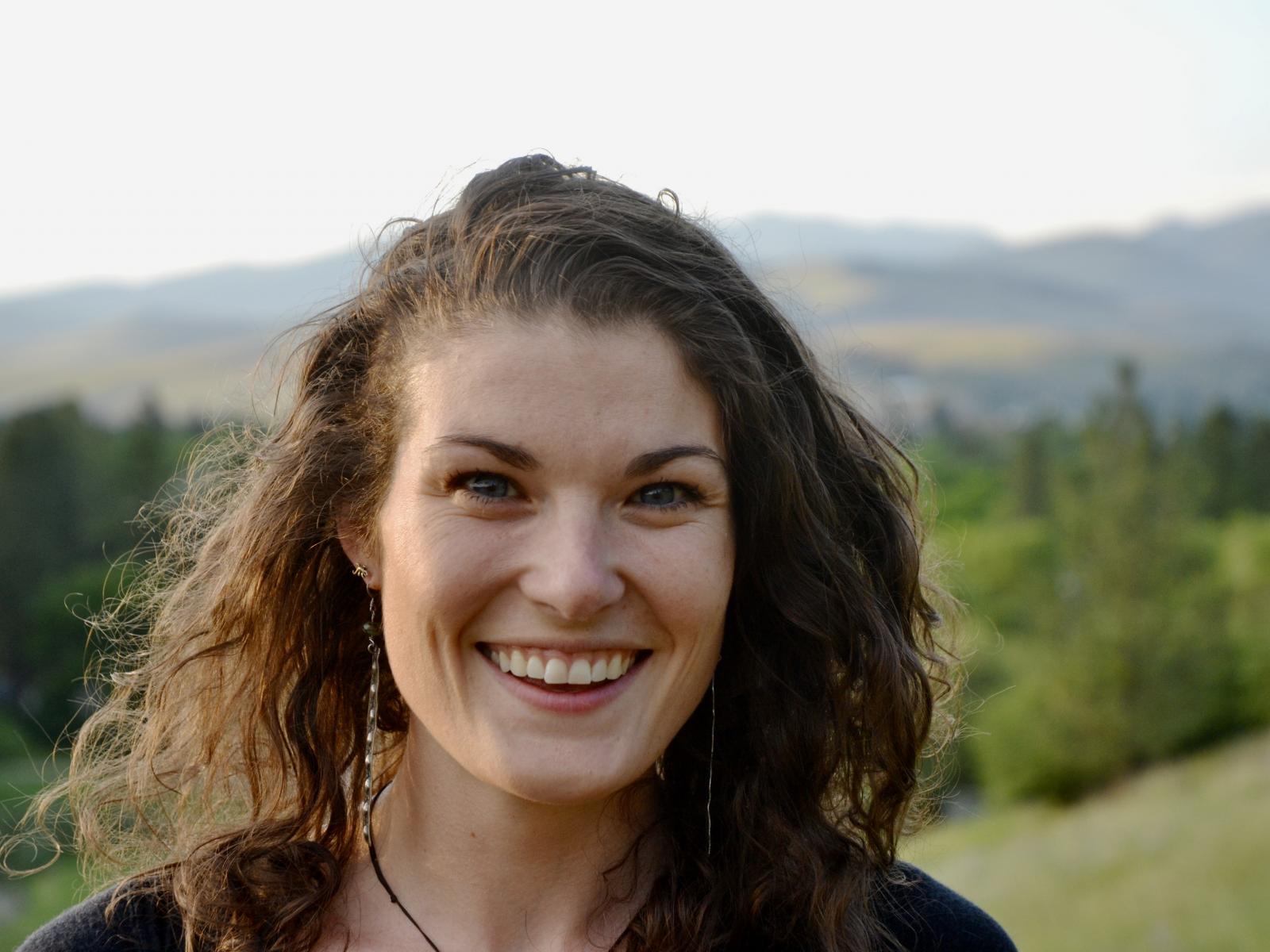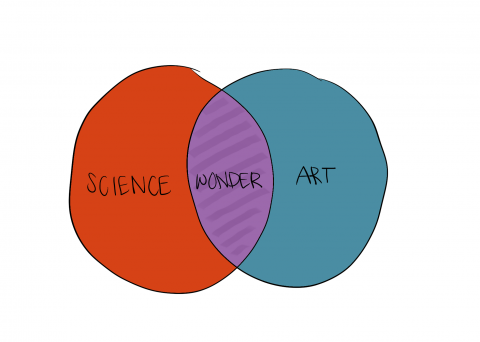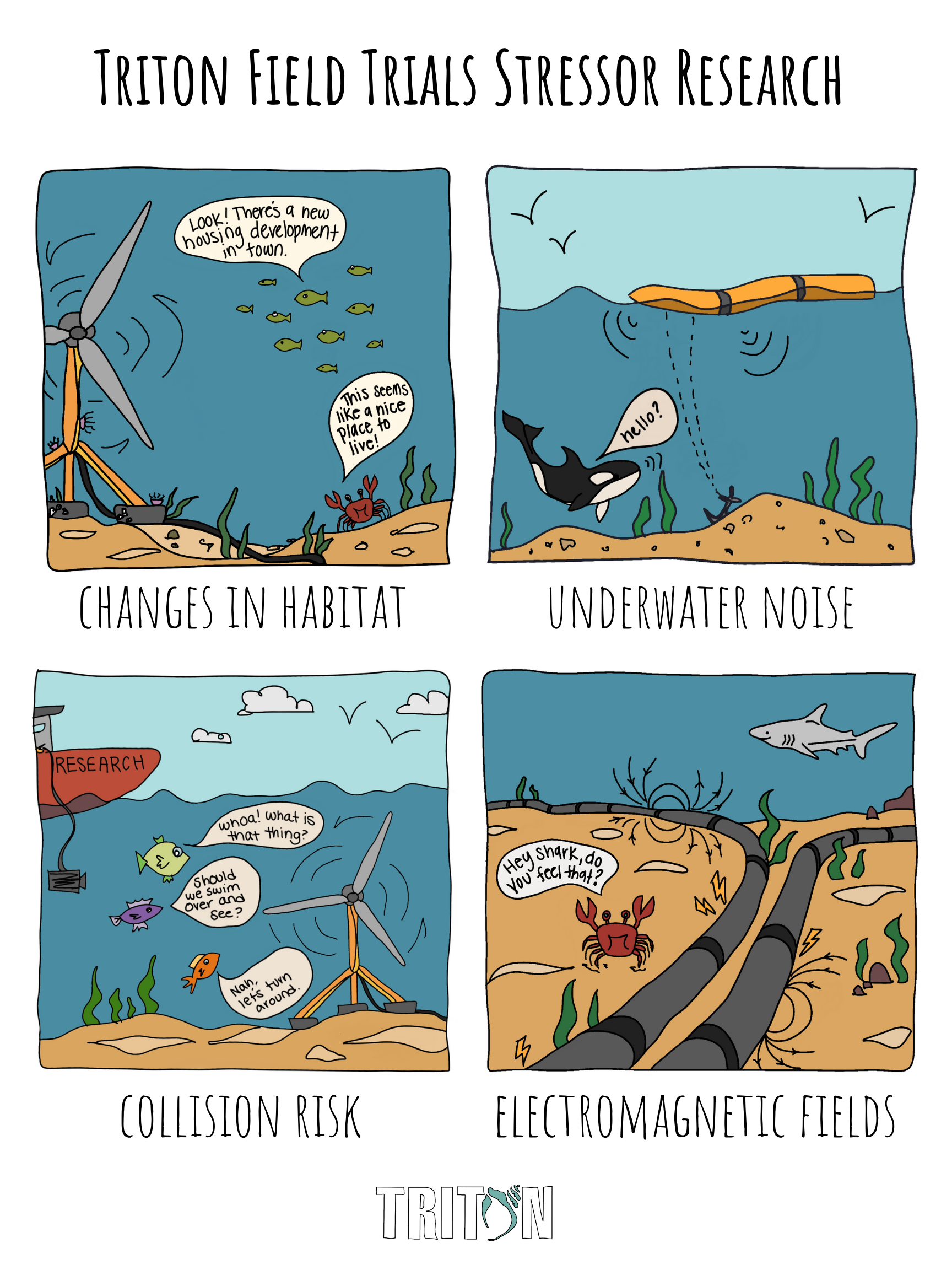Science Isn't Complete Unless It's Well Communicated: Sharing Triton's Research with Cailene Gunn

My name is Cailene Gunn. I'm the lead for the Triton Initiative's communication, outreach, and engagement efforts and the voice behind the Triton Stories. I am here to pull back the curtain and share what goes on behind the scenes to make science communication for our project possible. If this is your first time reading, or if you have tuned in to the past 12 stories, welcome! You will find that we are passionate about sharing the work Triton is doing to connect with broad audiences, increase awareness of marine energy, and engage with stakeholders to make our research accessible and impactful.
In a world where misinformation spreads quickly and the need for science that addresses the climate crisis is increasing, making science about clean energy more available and digestible is essential. Triton is a U.S. Department of Energy (DOE) Water Power Technologies Office initiative with the mission to reduce barriers to testing marine energy devices, like tidal and wave energy, by researching and developing monitoring technologies used to understand potential environmental effects. Triton's many projects contribute innovative science to the marine energy community so the industry can feel confident that these technologies are safe and sustainable renewable energy solutions for the United States. While Triton's research plays a vital role in advancing marine energy, our work isn't complete until the science is effectively communicated to those who can turn research findings into action.
Becoming a science communicator
I am a marine scientist, science communicator, and chronic ponderer. I have always been a lover of science and art, with a propensity to approach life with both an analytical eye and wild expression. When I was young, I saw a Venn diagram that showed the intersection of science and art: wonder. This intersection is a space that invites exploration, questioning, and free-thinking. Throughout my life, I've tried to draw a career path that allows me to work within this collaborative space of wonder. That path has led me to science communication.

My love for science was born from countless hours walking the rocky beaches of Maine, picking up stones, and asking questions about the natural world. This hobby inspired my studies at Bates College, where I received my BS in geology, focusing on geochemical cycling in wetlands. During college, I gained a lot of field experience working on a soil science project at the Hubbard Brook Experimental Forest in a National Science Foundation Research Experience for Undergraduates program. I then spent a semester exploring the beautiful rocks and geologic features of New Zealand. When I returned, I dove into a thesis project studying the carbon cycle and how salt marshes can help mitigate the effects of climate change, naturally. This research led me to Pacific Northwest National Laboratory's (PNNL) Marine and Coastal Research Laboratory to study greenhouse gas emissions in coastal wetlands, conduct carbon stock assessments, and support ecosystem restoration projects.
At PNNL, I spent years conducting research in laboratory and field settings, contributing to studies written up in technical language only a subset of the population understands, in journals accessible to few. While I saw value in this research process, I always searched for ways to break the mold of this traditional system. In 2018, I was trained as a STEM Ambassador, a PNNL Office of STEM Education program that teaches scientists and engineers skills to communicate complex concepts for outreach and STEM education. The training also includes developing stimulating, interactive materials to support scientific exploration. Through this program, I realized my most rewarding work involved connecting audiences of different ages and walks of life to influential science and telling stories of the humans behind the research. This program ignited a fire in me. For the first time, I felt I had the tools and resources to creatively translate technical concepts to wider audiences.
Around this time, I joined the Triton team. My first task was to write website updates for laypeople to describe Triton's support of the DOE-funded technology development projects to advance environmental monitoring around marine energy devices. This marked the beginning of my work in science communication for technical projects. It was also my first introduction to Triton and marine energy research. At the time, the project was composed of a small team, with Genevra Harker-Klimes and Garrett Staines at the helm. To update the website, I picked their brains about every technical detail of the technology development projects Triton supported at the time, including the University of Washington Drifting Acoustic Instrumentation System and the Integral Benthic Habitat Mapping project. I learned about Triton's mission and why the work we do matters to all U.S. citizens. I became deeply invested in the project's vision and became involved with field research for the Fish Mesocosm Study and the technical development of the Triton Field Trials changes in habitat research. I’ve watched the team expand and evolve, and the questions we are answering grow more complex. Throughout this time, a lot of Triton's research felt very siloed internally—while meaningful research was happening, not many people knew about it.
In 2020, project manager Alicia Amerson joined the team and brought a contagious passion for science communications. Together, we proposed funding for a communication, outreach, and engagement task to our DOE sponsor that would make it possible to tell the world about our research. Since receiving that funding in 2021, we have been building channels, content, and partnerships, and dreaming up new ways to communicate Triton's work and reach our target audiences.
Amplifying voices for marine energy research
The Venn diagram I referenced earlier has served as a compass, helping me navigate my work as a scientist. Innovative research involves creativity, passion, and a curiosity for what is possible. As I write about Triton’s research, I often wonder about a world powered by renewable energy, and what that looks like with marine energy as a significant contributor. Our whole team imagines this world—one where humans symbiotically work with the Earth's natural systems to fuel our lives and communities. This type of mentality has allowed Triton to progress, asking, what can we do to make this a reality? Are we considering all of the variables?
Marine energy is a budding industry that has not yet become a household name but has incredible potential to be a significant renewable energy resource for the United States. The utility-scale of marine energy is part of Triton’s research effort while others at PNNL look to integrate sensors and smaller-scale marine energy devices to support the Powering the Blue Economy efforts. We are at a critical point in time filled with opportunities to inform audiences about the potential of marine energy and address the data gaps about these technologies. These opportunities involve communicating with regulators who make decisions about permitting, articulating the potential of marine energy to those who will benefit from it, and increasing the accessibility of information to broad audiences. To accomplish this, we focus on the human element and tell stories about the people behind our research. We’ve been able to team up with PNNL's communications professionals to create engaging social media and newsletter content, collaborate with partners to capture science in action, and devise inventive ways to reach our target audiences. This work doesn't just involve telling others about our work, but also asking questions and understanding the unique perspectives of stakeholders and fellow researchers to work collaboratively in the pursuit of viable marine energy deployments.
Triton’s trailblazing effort to create a blueprint for communications, outreach, and engagement has inspired other projects to participate in the crucial work of science communication. The more people at the table sharing their research, the more informed society will be about transformative scientific discovery around the world. Connecting with our DOE sponsor, fellow researchers, regulators, policymakers, and the general public brings us closer to implementing technologies for a sustainable future.
Renowned clinical psychologist Anne Roe famously said, "nothing in science has any value to society if it's not communicated." As I write the Triton Stories, this sentiment extends beyond using inclusive language and improving access to information; to me, it means humanizing science and increasing representation. In the past year of conducting interviews and sharing these stories, I've been able to see the impact of highlighting the passionate, unique scientists, engineers, and operations staff who all come together to conduct meaningful research. Everyone has a unique science story to tell. Each person comes to the team with a different perspective, background, and life full of experiences—this is what makes research powerful. Telling science stories is an opportunity to inspire the next generation of diverse, open-minded, change-making scientists who can be a voice for the future.
Tell us what you think
Currently, one of our most important efforts is to highlight Triton's TFiT research. TFiT aims to advance knowledge of the potential environmental effects of marine energy by researching and providing recommendations for environmental monitoring procedures and technologies. This research addresses the four main stressors of concern identified in the 2020 OES-Environmental State of the Science Report, including changes in habitat, underwater noise, collision risk, and electromagnetic fields.
It can be challenging to articulate why these stressors are the most salient concerns for the industry, and we've been working to inject a little whimsy into our content. So for this story, I played around with some fun ways to communicate why we study these four stressor topics:

We want your feedback! What works well? What doesn’t? Email us at tritonmre@pnnl.gov with suggestions on types of content you would like to see, resources that would be helpful, or additional audiences that may be interested. We are always striving to improve our communications and reach audiences in new ways.
Note: Since this story was released, the Triton Communications team has published a communication framework and recommendations for marine energy projects in the Journal of Marine Science and Engineering. Read the paper: A Framework for Effective Science Communication and Outreach Strategies for Marine Energy Projects
Follow along:



Subscribe to our monthly newsletter here.
Published: July 13, 2021